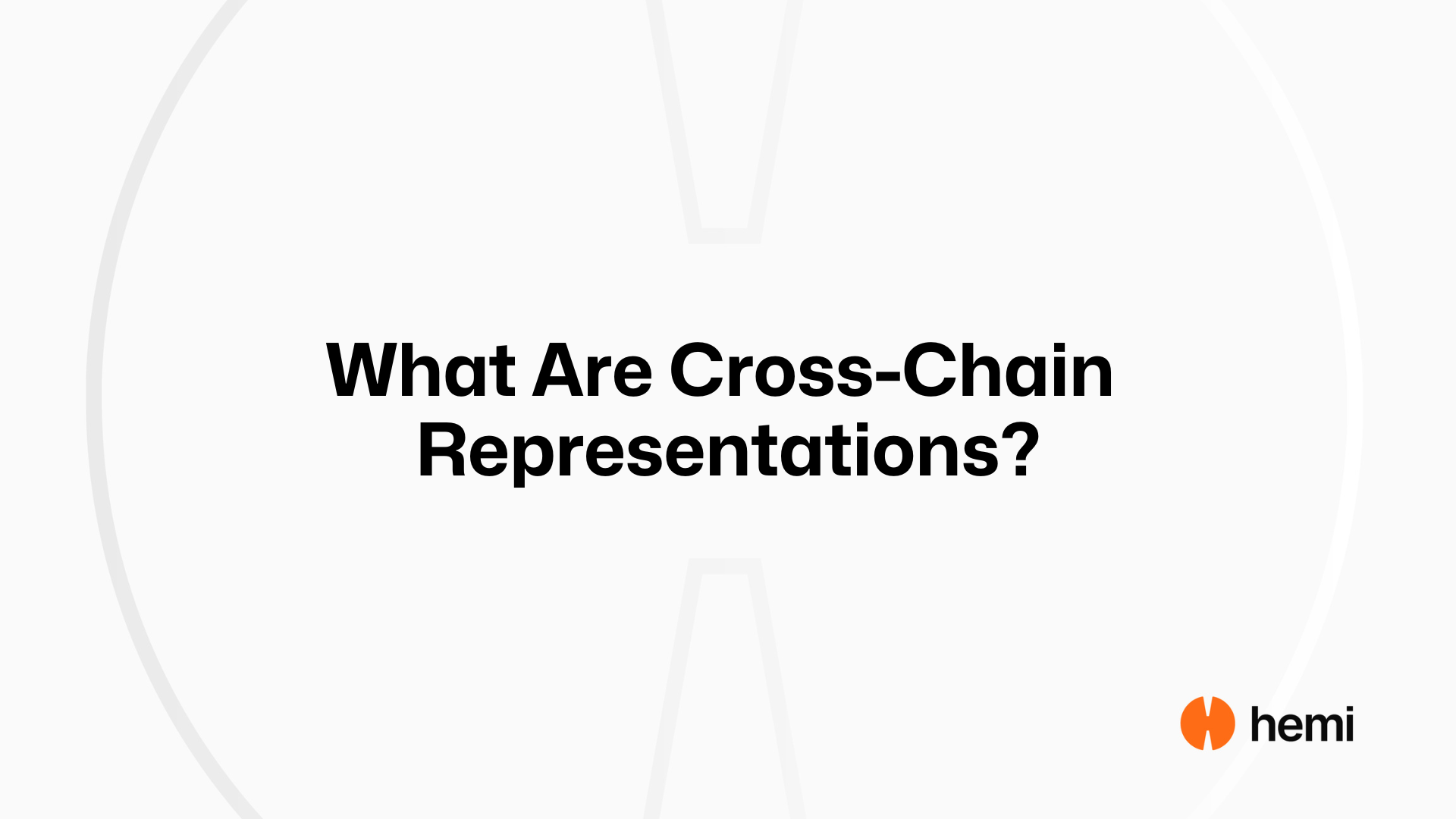- Bitcoin
- Ethereum
- Hemi
- Learn Center
- January 3, 2025
What Are Cross-Chain Representations?
Cross-chain representations allow tokens to move across blockchains by locking the original asset on one chain and issuing a mirrored version on another.

Cross-chain representations allow assets to move between different blockchains without being removed from their original network. Instead of transferring the asset directly, a technical process locks the original token on one chain and creates a mirrored version on another. This makes it possible to use the same value across blockchains that were not designed to work together.
The most common approach involves locking the token on the source chain. Once locked, a bridge issues a new token on the destination chain that represents the original. This new token is not the same asset but a replica—often called a facsimile—that is backed 1:1 by the locked version.
There are two main models for handling these representations: custody-based and validator-based systems.
In a custody model, a trusted entity—usually a company or a multi-signature wallet—holds the original tokens and guarantees the issuance of the mirrored tokens. The best-known example is Wrapped Bitcoin (wBTC) on Ethereum. Bitcoin is deposited with a custodian like BitGo, and an ERC-20 version of bitcoin is minted on Ethereum. The reverse process burns the wBTC and releases the original BTC from custody.
In contrast, a validator-driven protocol uses a network of nodes to monitor the source blockchain and confirm when tokens are locked. Once a majority of validators agree that the lock event occurred, they authorize minting of the mirrored token on the destination chain. This method reduces reliance on a single custodian but introduces new risks, such as validator collusion or failure.
Both models aim to create trust in the cross-chain asset. The key is the peg between the original token and its representation. If the original is locked and the bridge issues one mirrored token per original, the value should remain stable—at least in theory. The entire system depends on accurate locking, minting, burning, and unlocking.
Cross-chain representations are important for blockchain interoperability. They let users move value between ecosystems and participate in applications not available on the original chain. For example, Bitcoin holders can use their value in Ethereum-based DeFi platforms by using a wrapped version of BTC.
However, the model introduces risks. If the bridge is compromised, or the validator network fails to reach consensus, the mirrored token may lose its peg. Several high-profile bridge exploits have shown that securing the locking and minting process is difficult, especially when multiple blockchains and actors are involved.
Despite the risks, cross-chain representations remain a central tool for expanding the use of blockchain assets. As new models emerge—with more automation, fewer trust assumptions, and stronger security—the ability to move value between chains is likely to improve. These systems offer a way to make blockchains more connected without forcing them to adopt a single standard.